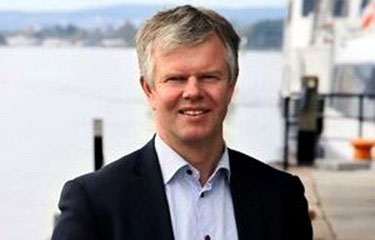Milarex CEO: High prices encouraging seafood "shrinkflation"

Europe is proving an increasingly challenging market for Atlantic salmon, particularly in retail channels, according to Milarex CEO Thomas Farstad. Established in 2016, the Oslo, Norway-headquartered salmon-processing company is selling about 100 million consumer packs of products per year into 22 international markets.
While the salmon category has seen some value growth in a few European markets, its overall retail value across the region was down 5 percent in 2022, Farstad said at the 2023 North Atlantic Seafood Forum.
One of the main contributors to this retail downturn has been the post-Covid reopening of foodservice channels, but another important driver is the current economic situation in Europe and the price its consumers are being asked to pay for salmon, Farstad said.
“Disposable incomes are decreasing and we’re seeing this affect salmon sales in retail,” he said. “Big markets such as Germany and Spain saw on-the-shelf price increases of between 15 and 25 percent last year. This led to a decline in sales volumes of 20 percent.”
While certain other markets like France and the United Kingdom fared a little better after seeing slightly lower price increases in 2022, French and British consumers have been asked to pay more since the start of 2023, which has resulted in falling sales volumes, he said.
After a volume increase of 2.2 percent in 2022, European retail sales in January and February 2023 were “unfortunately” down to 2019’s pre-pandemic levels, Farstad said.
“Last year, it went down 17 percent, and this trend is holding so far this year,” he said. “The consumers that we recruited during Covid have left. They’ve stopped buying because there’s unfortunately no evidence in the data of any consumer stickiness in the category.”
Although it’s difficult to get reliable data for out-of-home consumption, Farstad said there’s also no reason to believe that any more salmon is being consumed in European foodservice today than in 2019. And while salmon has seen some “remarkable growth” in U.S. retail, with the volumes sold increasing 25 percent compared with pre-pandemic levels and perhaps being partly responsible for driving up prices, the cost of salmon in European retail has “become an issue” and many households can no longer afford to buy the products. In the short-term, there’s reason to believe the European retail market for salmon will decline further, he said.
“The rate of decline is stable or increasing compared to last year, prices are higher than ever, and salmon is gradually moving from being an everyday item to something that is more for special occasions and celebrations," he said. “That of course is a challenge for the industry, but as the [production] volume growth is limited, there are other markets that have the willingness to pay [the prices].”
But while the salmon market is in decline, European consumers are still buying a lot of salmon, Farstad said. Recognizing that preferences are changing, Farstad said Milarex has been developing and launching …
Photo courtesy of Milarex





Share